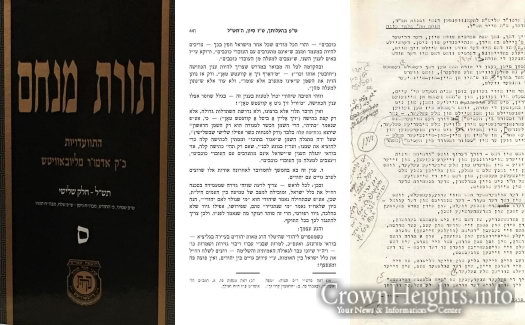
First Two Decades of Rebbe’s Talks Completed
In an historic milestone, Vaad Hanachos B’Lahak has announced the publication of Volume 60 of the Rebbe’s voluminous collection of talks—Toras Menachem-Hisvaduyos.
The monumental task of collecting, transcribing, translating, editing and publishing the Rebbe’s talks in Hebrew, was begun in 1991. With the publication of this volume a milestone has been reached: for the very first time, all the talks and discourses of the Rebbe delivered at farbrengens during the first twenty years of the Rebbe’s leadership (1950-1970) are now in print.
The current volume includes the Rebbe’s talks and discourses delivered during the months of Nissan through Sivan of 1970. Additional bonuses are five responses from the Rebbe, written to the editors who transcribed the farbrengens. They are incorporated here within the completed essays.
Vaad Hanachos B’Lahak is the official publisher of the Rebbe’s talks in Hebrew, directed by Rabbi Chaim Shaul Brook and staffed by veteran scholars of the Rebbe’s teachings, Rabbis Yoel Kahan, Dovid Feldman and Yisroel S. Kalmanson. They are assisted by a dedicated team of experts: Rabbis Hirshel Notik, Dovid Olidort, Menachem M. Kaplan, Aaron L. Raskin, Eliezer Twersky, Yisroel Y. Silberstrom, Moshe Zaklikowsky and Yeshaye Marantz. By special arrangement with the Chabad-Lubavitch publishing house, Kehot Publication Society, the volumes are published under its aegis and are published with the Kehot logo.
Some highlights of the talks in this volume include:
● A discussion on the jubilee of the passing of the Rabbi Shalom Dovber, the fifth Rebbe, and the automatic passing of the mantle of leadership to his son and successor, Rabbi Yosef Yitzchak, the sixth Rebbe.
● The duty of the Israeli students who travel to the United States to study Torah – to be meticulous with their time, and the imperative for them to be totally immersed in their studies, without distractions of any sort.
● Nearly in every farbrengen, the Rebbe mentions (his voice often choking up and his eyes forming tears), the plight of Chasidim still in the Soviet Union, trapped behind the “Iron Curtain.” He showers them with boundless material and spiritual blessings, wishing them a speedy release from their incarcerated state. In one particular talk the Rebbe extolls the virtue of those mothers who selflessly encourage their husbands and children to study Torah clandestinely, in attics and cellars.
● The Rebbe’s famous battle for giyur k’halacha was (publicly) launched by the Rebbe at the Purim farbrengen of this year. The present volume is replete with the Rebbe’s call for the rectification of the Law of Return to include the words: k’halacha.
The new volume is printed, by divine providence, in the days leading up to Yud-Alef Nissan. It was exactly seventy years ago, while the Rebbe was in Paris to greet his mother, Rebbetzin Chana, that she revealed to Chasidim the significance of this special day.

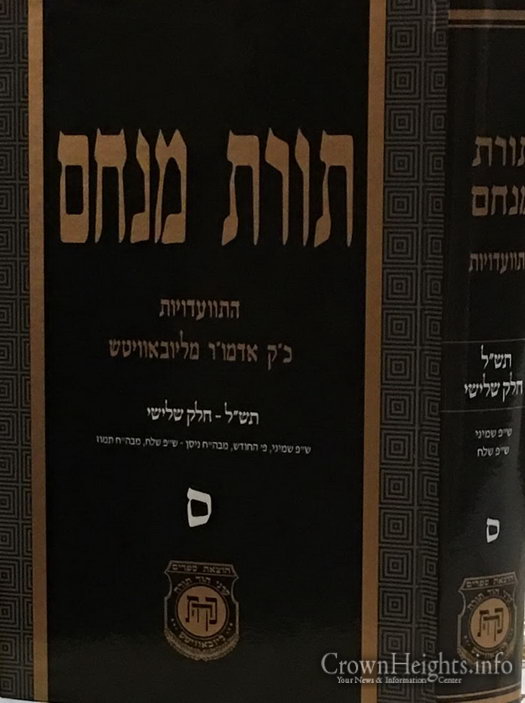
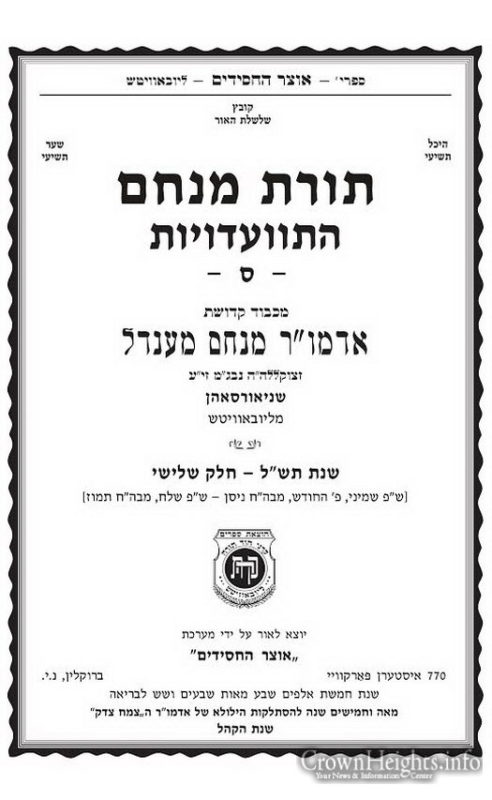

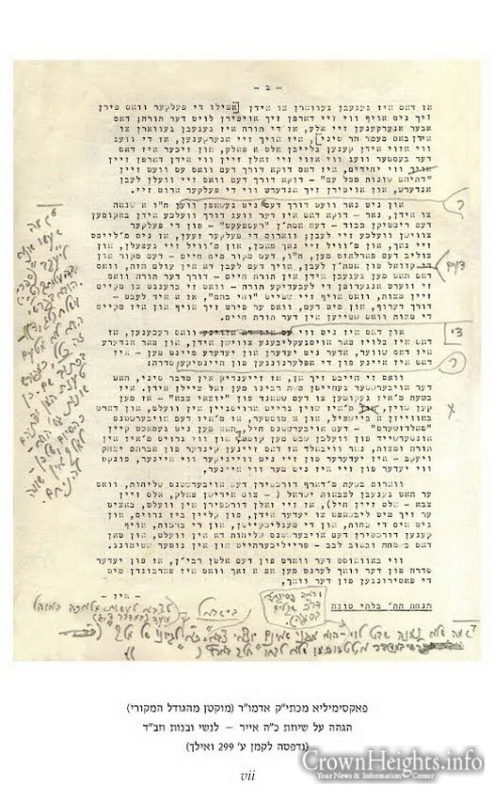
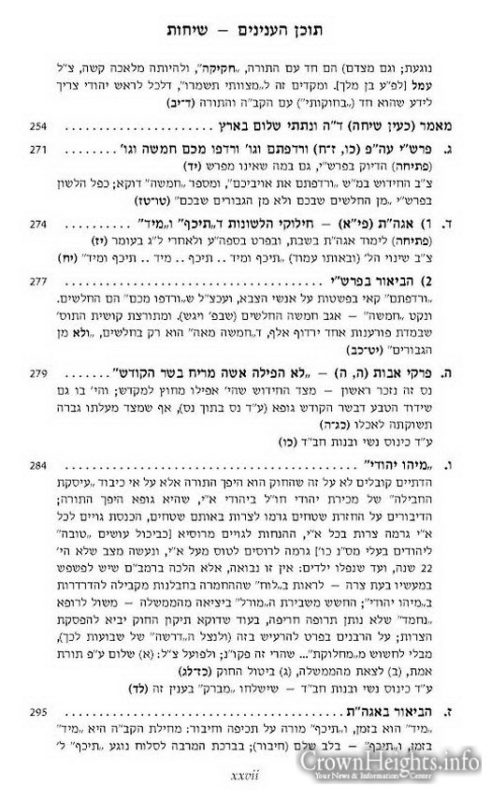
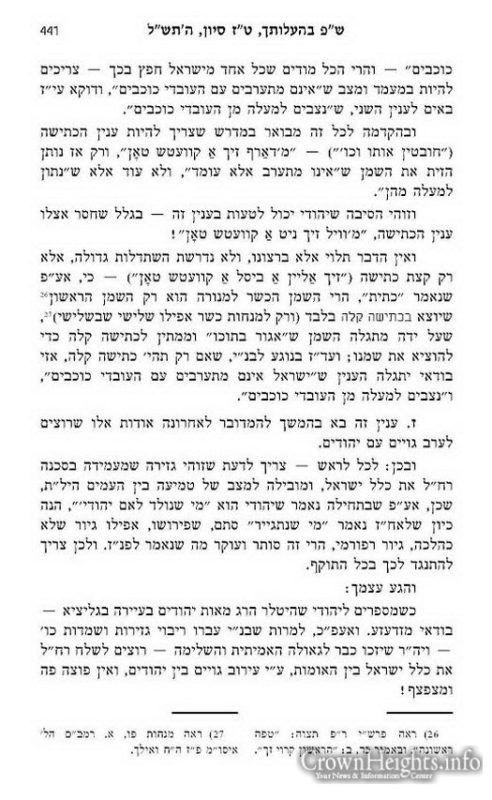
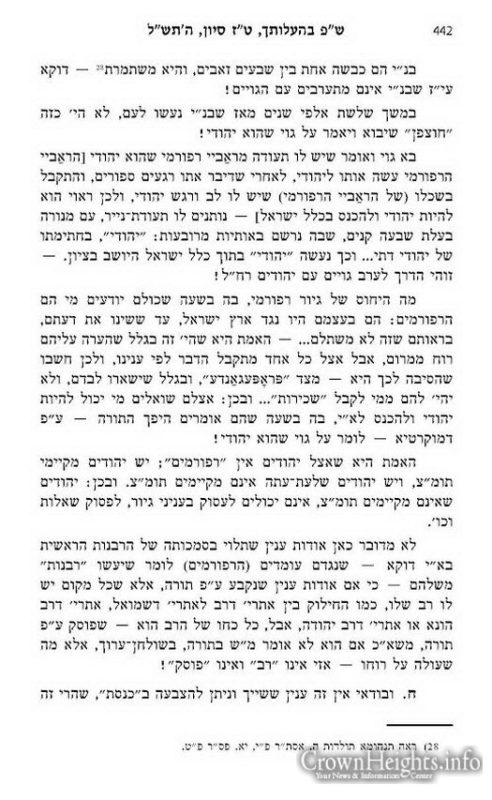
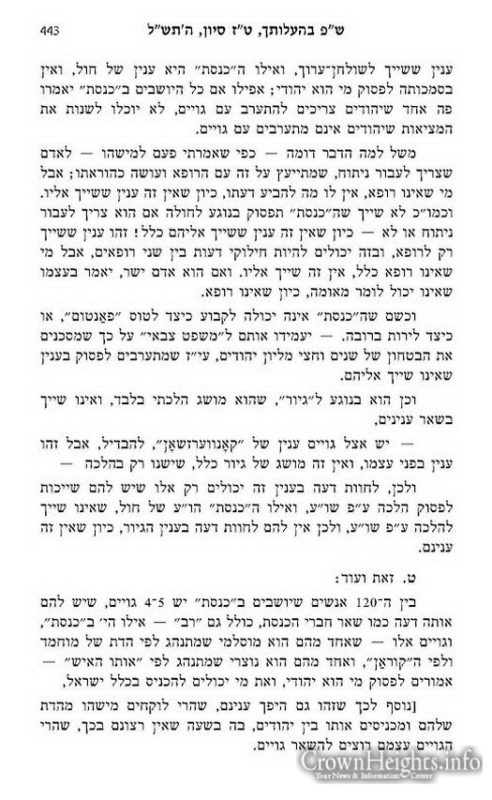












The story behind the Sicha
There is an interesting story behind the Sicha with the Rebbe’s notes printed above.
Rabbi Yosef Minkowitz, then a bochur in 770, was in charge of preparing the Rebbe’s weekday Sichos for publication. In those days most Sichos were published only after many days (or weeks) after the Sicha was said by the Rebbe.
On Sunday, 25 Iyar 5730, the Rebbe said a Sicha for the participants in the Nshei Chabad Convention. An effort was made to publish the Sicha as quickly as possible.
Two reel-to-reel tape-recorders were used to record the Sicha in an adjacent office. After a few minutes of the Sicha, the tape was listened to, and that portion was immediately typed on paper. Then the tape was returned to record, and the tape from the second tape-recorder was listened to and typed up, and so on every few minutes.
As soon as the first page was transcribed, Rabbi Minkowitz immediately prepared it for publication (following guidelines of the Rebbe). When the entire Sicha was typed on paper (12 pages), the first prepared pages were immediately typed on Gestetner stencils. After each page was reviewed for typing errors etc, it was stenciled (printed).
After the Rebbe finished saying the Sicha (which lasted about an hour), many women (mainly shluchos and out-of-towners) approached the Rebbe for Brochos etc. This took an additional hour.
Meanwhile all 12 pages were stenciled, collated and stapled; ready to be publicized as “Hanochas Hatmimim”.
When the Rebbe came upstairs, Rabbi Label Groner handed the Rebbe the Sicha. The Rebbe looked at it, and remarked in amazement: “this is from tonight”?!
The Rebbe left 770 around midnight. The next morning the Rebbe returned the Sicha “mugo” with many additions, footnotes etc. and it was printed in a kuntres and subsequently in Likutei Sichos vol 8, pages 217 – 231.
This never happened before or after.